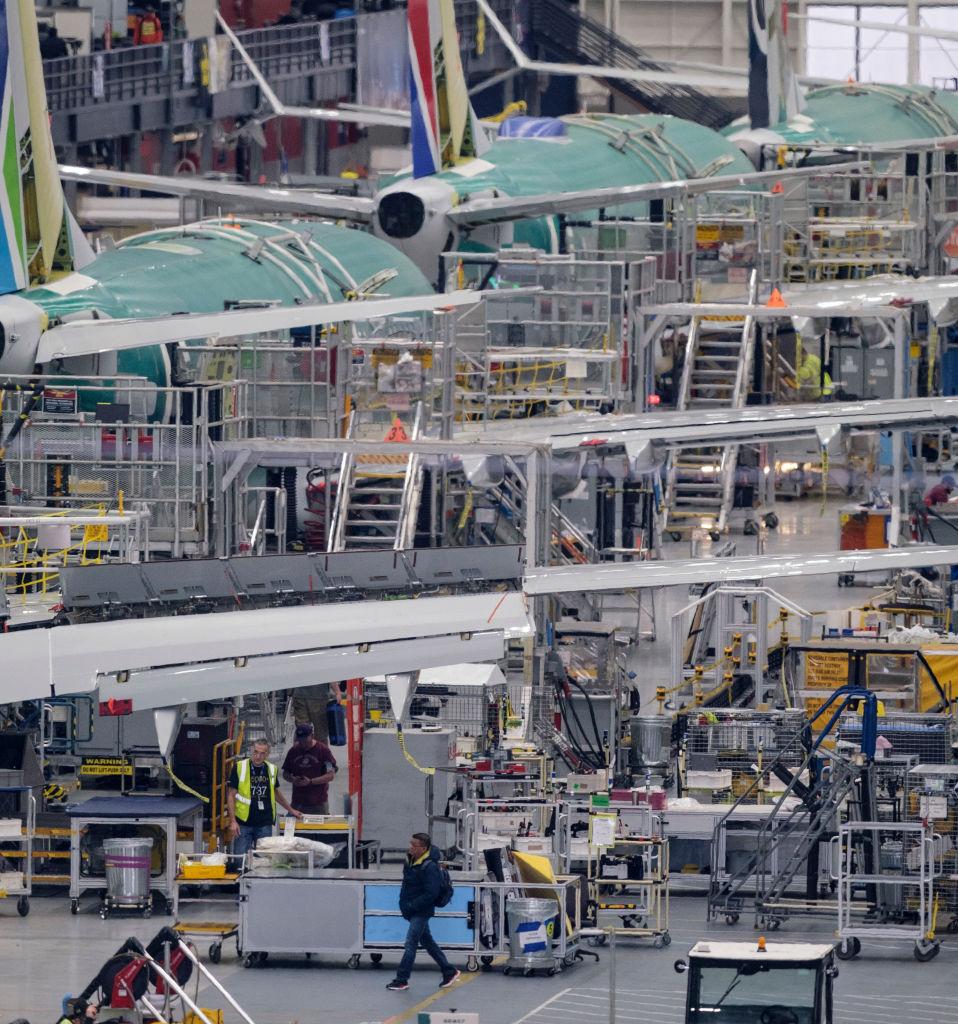
With so many proverbial tea leaves to read, the commercial aerospace manufacturing sector remains in a fog when it comes to guessing narrowbody build rates this year and next.
But increasingly, financial analysts are saying one thing seems sure: Airbus and Boeing still are too optimistic and both OEMs could dial back expectations this month.
“Airbus plans to increase deliveries to 45 a month by year-end, which looks optimistic,” Bloomberg analysts George Ferguson and Francois Duflot said March 26. “We expect builds to be cut to 30 a month.”
Meanwhile, Boeing has halved guidance for delivery of the roughly 410 737 MAXs in its immediate inventory by December, while reducing build-rate clarity by committing to production of 31 737s a month by early 2022, according to the analysts. Others stress that there are another 130 or so Boeing 737 shipsets parked in Wichita at Spirit AeroSystems, meaning a total undelivered backlog of around 540 aircraft.
That matters as build and delivery rates are disconnected due to inventory piling up when the MAX was grounded for a year and a half until late 2020. But with European and U.S. health officials warning about another surge of coronavirus infections due to variants and pandemic fatigue, airlines may not be in as much of a rush now to take deliveries as they indicated just a few months ago.
“Even as slight cash generation approaches, the risk of another COVID-19 wave and large number of underused or stored aircraft has most carriers resisting new deliveries,” Ferguson and Duflot said. “Airlines in the U.S. and Europe, including Ryanair, Southwest, Lufthansa, Air France, United, American and Delta, burned over $28 billion in 2020. Most have built up strong liquidity positions, yet many used debt and would prefer to improve the balance sheet rather than buy more planes.”
At the same time, given the roughly 540 completed 737s/shipsets yet to be delivered, it may well take until 2024 for Spirit to reach the low 40s in new production, Cowen analysts Cai von Rumohr, Dan Flick and Scott McCrery said Feb. 25.
Supply chain leaders are not raising their hopes, according to the Accenture aerospace executive survey from January. Only 27% of surveyed aerospace executives expect narrowbody aircraft deliveries to increase over the next six months compared to a year before, while 44% expected unit delivery decreases. For year-over-year comparisons, only 49% expect an increase for 2021, while 34% think their related deliveries will remain the same and 17% still expect a cut for 2021 compared with 2020.
Airbus and Boeing face an opportunity to alter their forecasts in April when they report first-quarter financial results.
Still, analysts are not all doom and gloom, particularly as their long-term forecasts nonetheless call for a narrowbody-led recovery in commercial aviation. Having tweaked their base-case scenario on RPMs to a recovery to 2019 levels in 2023-24, Vertical Research Partners on March 26 also increased their Airbus and Boeing narrowbody delivery forecasts by an aggregate 11% over 2021-2025. This sees the A320 getting up to a rate of 65/month in 2025, and the 737 improving to 48/month in the same year.
“While both OEMs should benefit from a recovery in the narrowbody market, we think Airbus is the better placed with its [roughly] 60% market share for the A320 versus the 737 MAX,” added Vertical’s Robert Stallard and Karl Oehlschlaeger. “This strong position looks set to be further boosted by the entry into service of the A321XLR in 2023, further enhancing its dominant position at the top end of the narrowbody market.”





